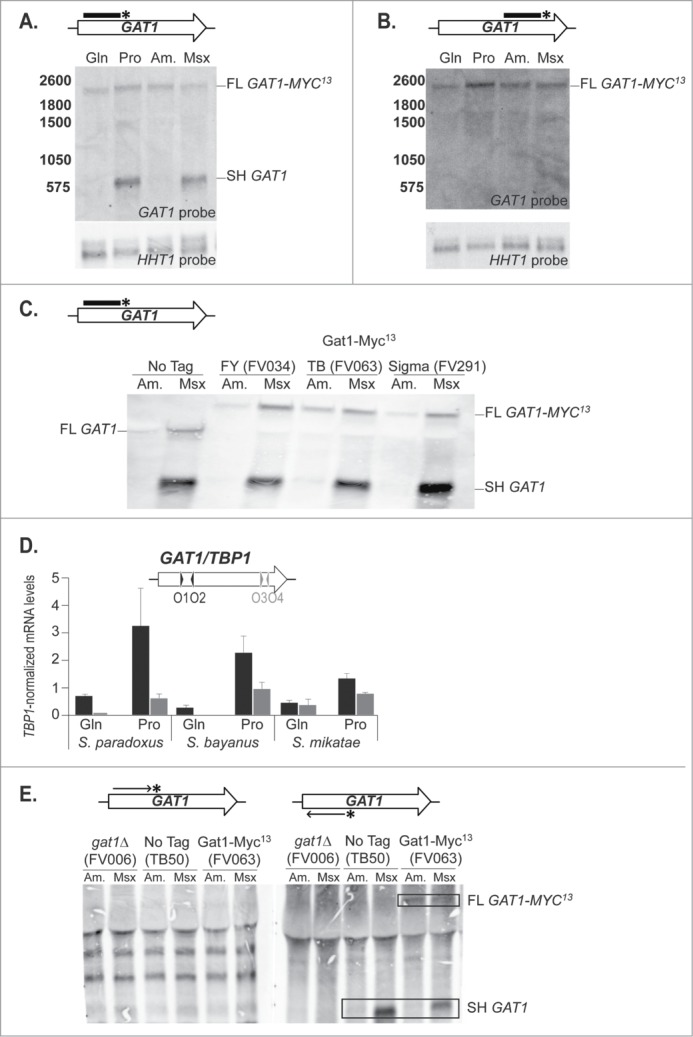Figure 4.

Two mRNAs are produced from the GAT1 locus. Total RNA was isolated from wild type (TB50), gat1Δ (FV006) and GAT1-MYC13 cells of the TB (FV063), FY (FV034) and Sigma (FV291) genetic backgrounds that were grown in YNB medium with glutamine (Gln), proline (Pro) or ammonium (Am.) as the nitrogen source and treated with methionine sulfoximine (Am. + Msx). 30 μg of total RNA from each sample were subjected to Northern blot analysis. HHT1 was used as the loading and transfer efficiency control. (A). GAT1 mRNA analysis in wild type GAT1-MYC13 cells using a double stranded probe covering the 5′ region of the gene (GAT1O7-GAT1O10). (B). GAT1 mRNA analysis in wild type GAT1-MYC13 cells using a double stranded probe covering the 3′ region of the gene (GAT1O15-GAT1O4). (C). GAT1 mRNA analysis in wild type untagged and GAT1-MYC13 cells from 3 different genetic backgrounds using a double stranded probe covering the 5′ region of the gene (GAT1O7-GAT1O10). (D). Wild type cells of Saccharomyces paradoxus, bayanus and mikatae were grown in YNB medium with glutamine (Gln) or proline (Pro) as the nitrogen source. Total RNA was isolated and GAT1 mRNA levels were assessed using qRTPCR as described in Figure 3 using GAT1O1-O2 and GAT1O3-O4 primer pairs specific for each species. (E). GAT1 mRNA analysis in wild type untagged (TB50), gat1Δ (FV006) and GAT1-MYC13 (FV063) cells using strand-specific probes covering the 5′ region of the gene (GAT1O7-GAT1O10).
